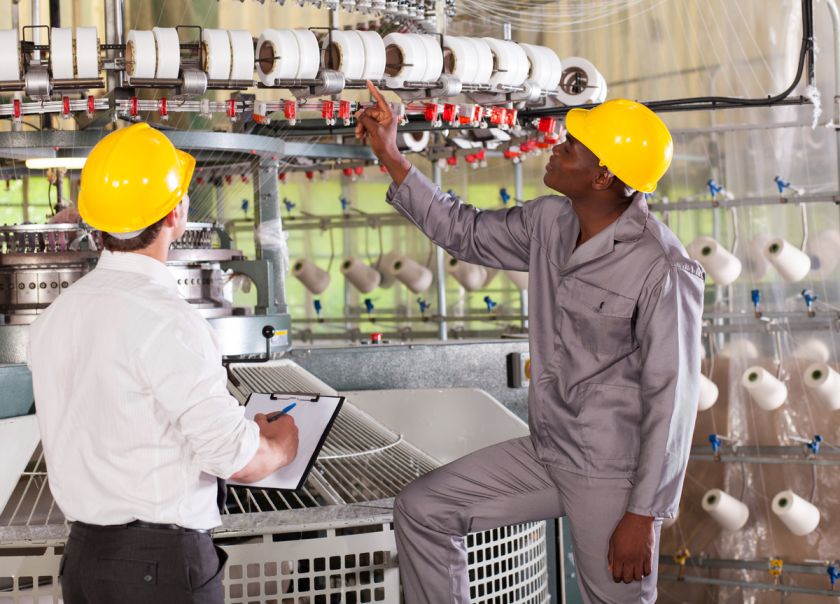Textile Testing: How to Create a Quality Control Checklist



The textile industry is remarkably complex and offers a challenging environment for brands to thrive. The pressure of creating high-quality garments is exceptionally high. Brands want to avoid facing quality problems.
Hence, manufacturers and suppliers use a textile fabric QC checklist that outlines product specifications and details and ensures quality control throughout production.
Creating a quality control checklist for textile fabric may be daunting. It must be concise but simultaneously contain all the critical information about the requirements in favour of brevity. A QC checklist needs revisions with quality issues that come up during inspection.
When you draft a quality control checklist, ensure to include the necessary details regarding your product requirements. After all, you don’t want to receive products that don’t meet your expectations.
Keep reading the article to find out how to create a QC checklist with no mistakes.
How to Create a Quality Control Checklist for Textile Testing?

Quality control checklists for textile fabric are guidelines to identify defects in supply and production. A QC checklist, also known as Inspection Criteria Sheet, provides room for corrections before large-scale production begins. So basically, a QC checklist decides whether a product will pass or fail for production.
Here are some of the details manufacturers demand on a textile quality checklist.
- Fabric weight and dimensions
- Material
- Colour
- Labeling
- Textile composition
- Textile fabric design
- Shrinkage, and more
A QC checklist for textile testing broadly includes four elements, namely -
1. Textile Fabric Requirements
It is one of the most evident and essential items to be included in the quality checklist. Often suppliers or production workers don’t fully understand the requirements, increasing the risk of a failed product. A carefully drafted QC checklist will leave no room for confusion around product requirements.
2. On-Site Fabric Tests and Checks
Unless you want a re-inspection, mention all the aspects of the fabric and raw material quality check clearly. The specification sheet must include inspection parameters such as design, weight, colour, and shrinkage limit.
3. Defect Classification
One of the top reasons to run an inspection check is to identify any quality defect. A textile fabric will pass for production only if it clears the on-site testing. If the QC checklist doesn’t comprise a list of reported flaws, the issue may go unnoticed. As a result, the product might pass the inspection when it actually should fail. It may jeopardize your reputation and lead to heavy losses in the future once the defected fabric goes for large-scale production.
4. Collaboration
It is always a good idea for in-house QC staff and production workers to collaborate and develop a quality control checklist. It will ensure accurate QC reports and a successful inspection process.
List of tools used for textile testing

1. Digital Camera
It gives photographic evidence that saves time while explaining details to anybody over long distances.
2. Defect Stickers
Various defects are categorised using different stickers. It saves time and makes defect tracking easy.
3. Pantone Color Swatch
A Pantone Matching System (PMS) helps to check the colour codes specified by the manufacturer.
4. Barcode Scanner
It helps in tracking various products hassle-free throughout the supply chain.
Essential textile tests to be carried out for quality control
- Fabric Quality: Compare the sample of textile fabric with other high-quality materials to determine its durability.
- Suitability: Next, check how well the sample fabric is suited for the intended product. For example, determine whether the cloth is suited for winter weather, activewear, etc.
- Elasticity: Next, check how well the sample fabric is suited for the intended product. For example, determine whether the cloth is suited for winter weather, activewear, etc.
- Crocking: Test whether the colour of the sample fabric will transfer to another piece of clothing on rubbing.
- Burst Testing: Perform this test to check the strength of the fabric as in how much force it can take.
- Abrasion Testing: Test the fabric for how well it holds up when rubbed with another piece.
Importance of Fabric Quality Control
The fabric has the most crucial role in the textile industry. Despite the beautiful designs and perfect finishing, the consumers may move on to another brand if the quality doesn’t match their standards.
Hence, fabric quality control checks are significant. Unfortunately, most times, brands create beautiful designs with incorrect fabrics leading to a massive waste of resources, time, and money. It happens because of poor quality management in the production process.
A QC checklist helps in effectively avoiding potential defects and losses at early stages, ensuring brand repo and quality. Quality control sheets ensure textile fabric meets all the requirements.
Running a fashion brand is not easy. Finding suppliers, sourcing raw materials, creating designs, manufacturing, handling sales, and more is challenging, especially when the competition in the apparel industry is above par.
Fashinza is making it easy for the brands to source clothes, map designs, and manufacture collections. We are the Amazon of fashion brands and labels.
How are Quality Control Checklists for Textile Testing Effective for Manufacturers?

Consider a QC checklist as an effective damage control method that helps avoid manufacturing and production disasters. A detailed and carefully developed quality specification sheet will keep the whole team - suppliers, manufactures, and production unit on the same tab.
Using a quality control checklist ensures:
- There are no conflicts or confusion between suppliers and manufacturers.
- There are no defects in the final product.
- The final product meets the regulatory standards of the retail market.
- Quality control inspectors have specific criteria to follow. It will help in spotting defects that may otherwise go unnoticed.
Meet International Regulatory Standards with Quality Control Checklists
Domestic markets and international markets have different standards for safety and quality. Depending on the market regulations, a product may pass or fail the quality check. A product that qualifies for domestic standards may sometimes not comply with international rules. In such cases, however good the product may be, the brand will suffer a loss.
Therefore, in order to avoid any confusion or losses in the final stages, it is better to make a QC checklist. It will outline essential specifications, including international standards for textile testing, manufacturing, and production.
Wrap-Up
When it comes to manufacturing fabric, it’s beneficial to implement a system of quality control. While this is often associated with big brands, it is just as significant for small brands that create short-run production.
A good quality control checklist helps the brands navigate through manufacturing and production processes. It helps in maximising profits by cutting down on mistakes. Having a standardised set of guidelines for quality checks boosts productivity and propels business.
Creating a quality control checklist for textile testing will assure you of the quality and durability of the sample textile fabric. You will be confident about how well your product can withstand the competition based on its quality and performance. Reach out to Fashinza if you need help with sourcing textile fabric, mapping designs, or manufacturing.



















